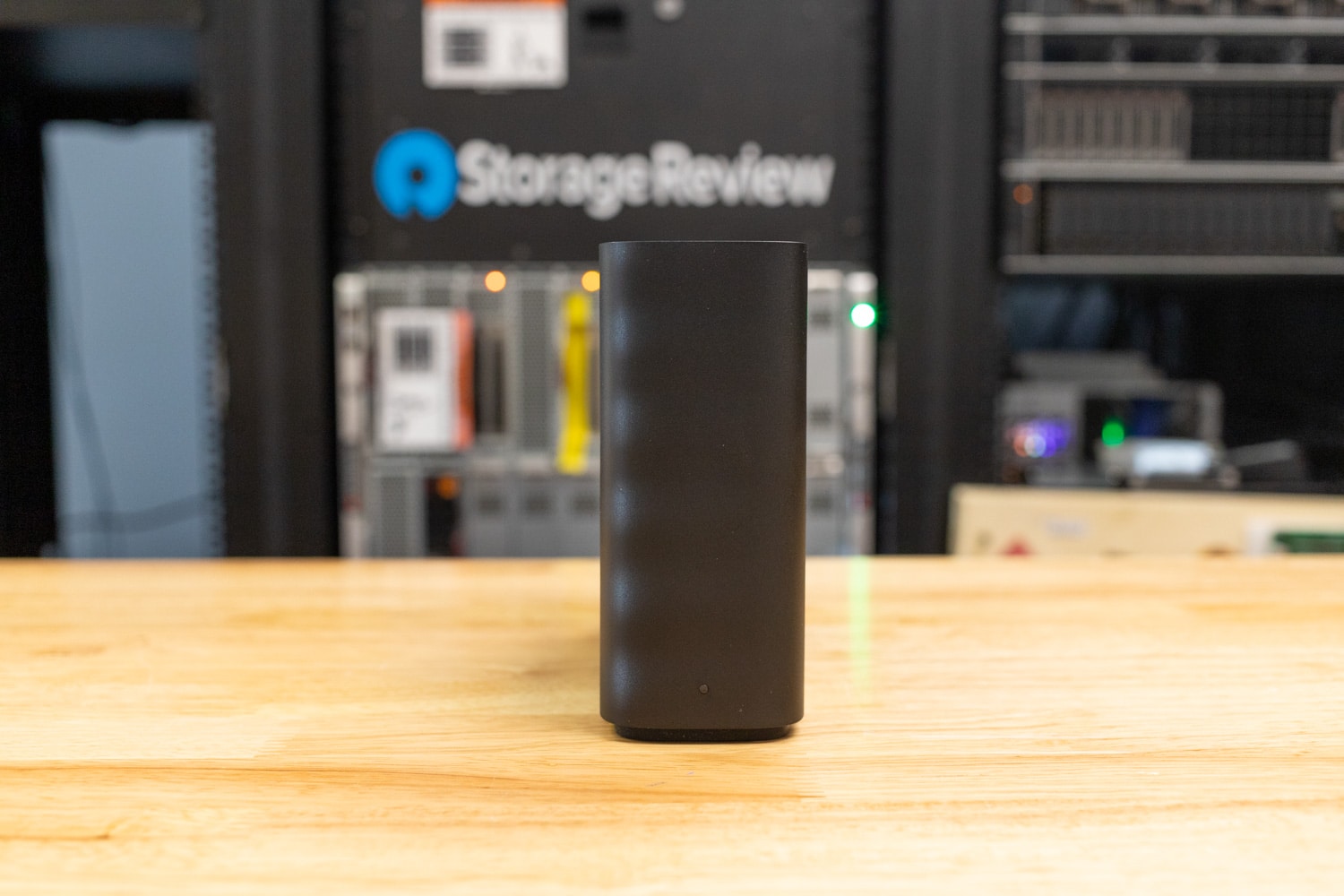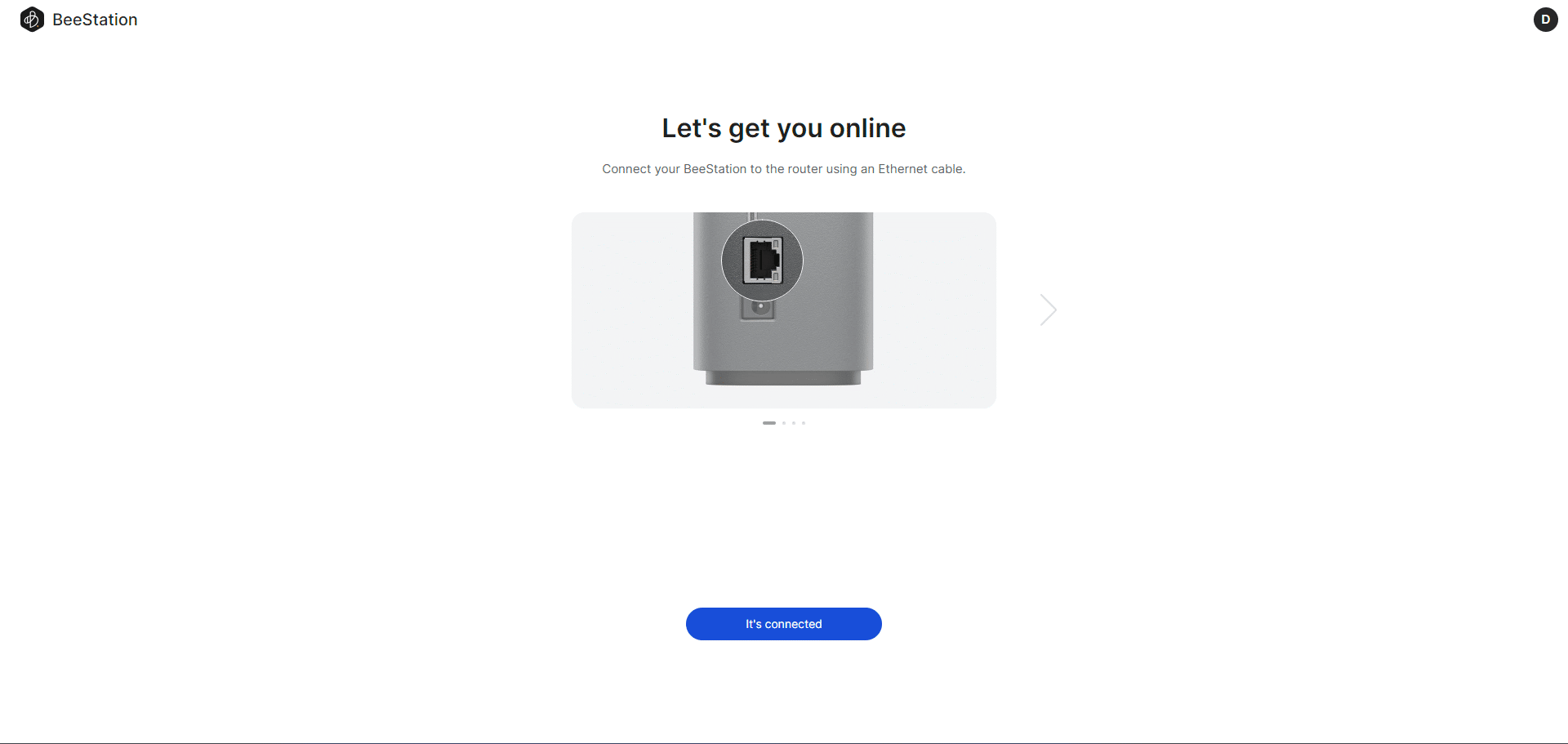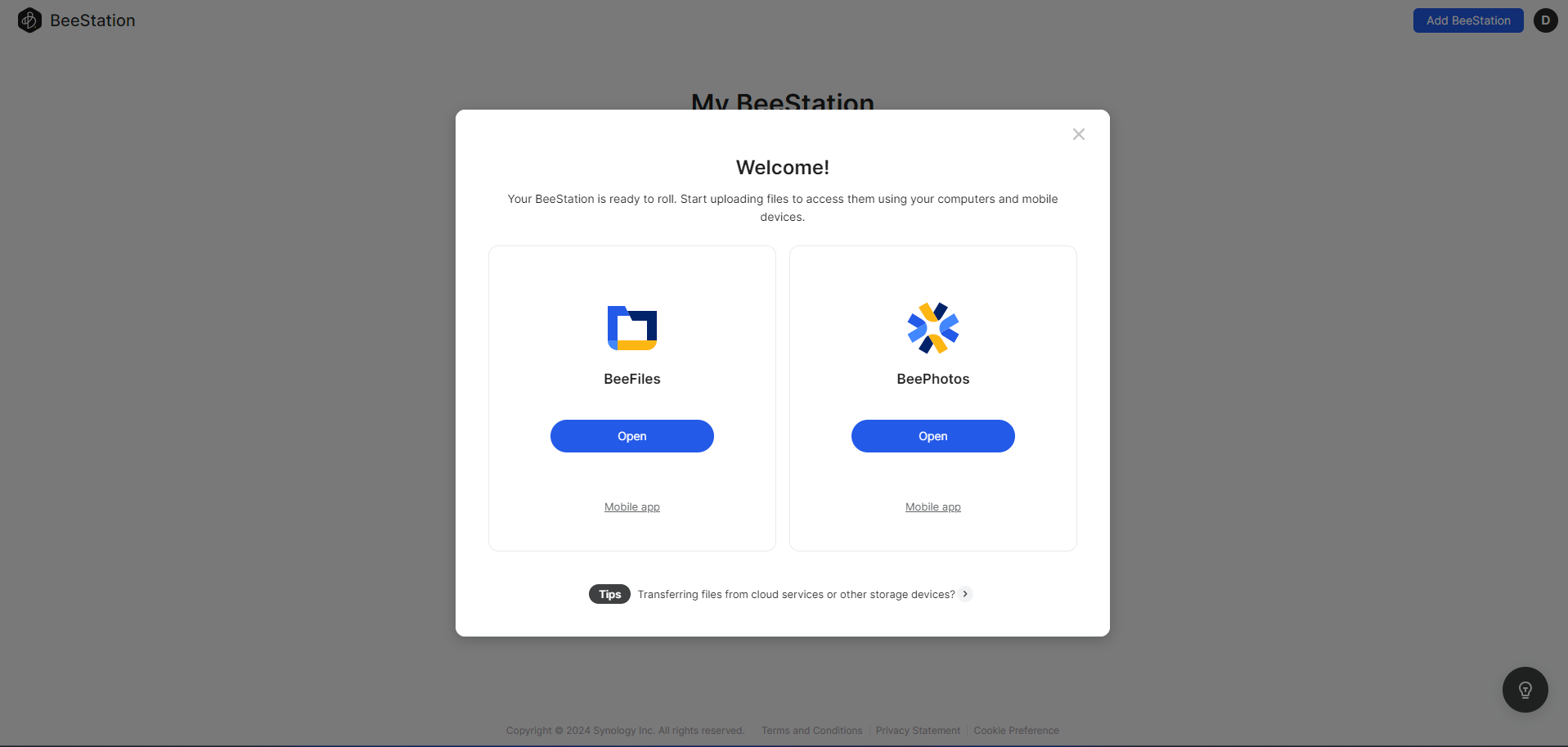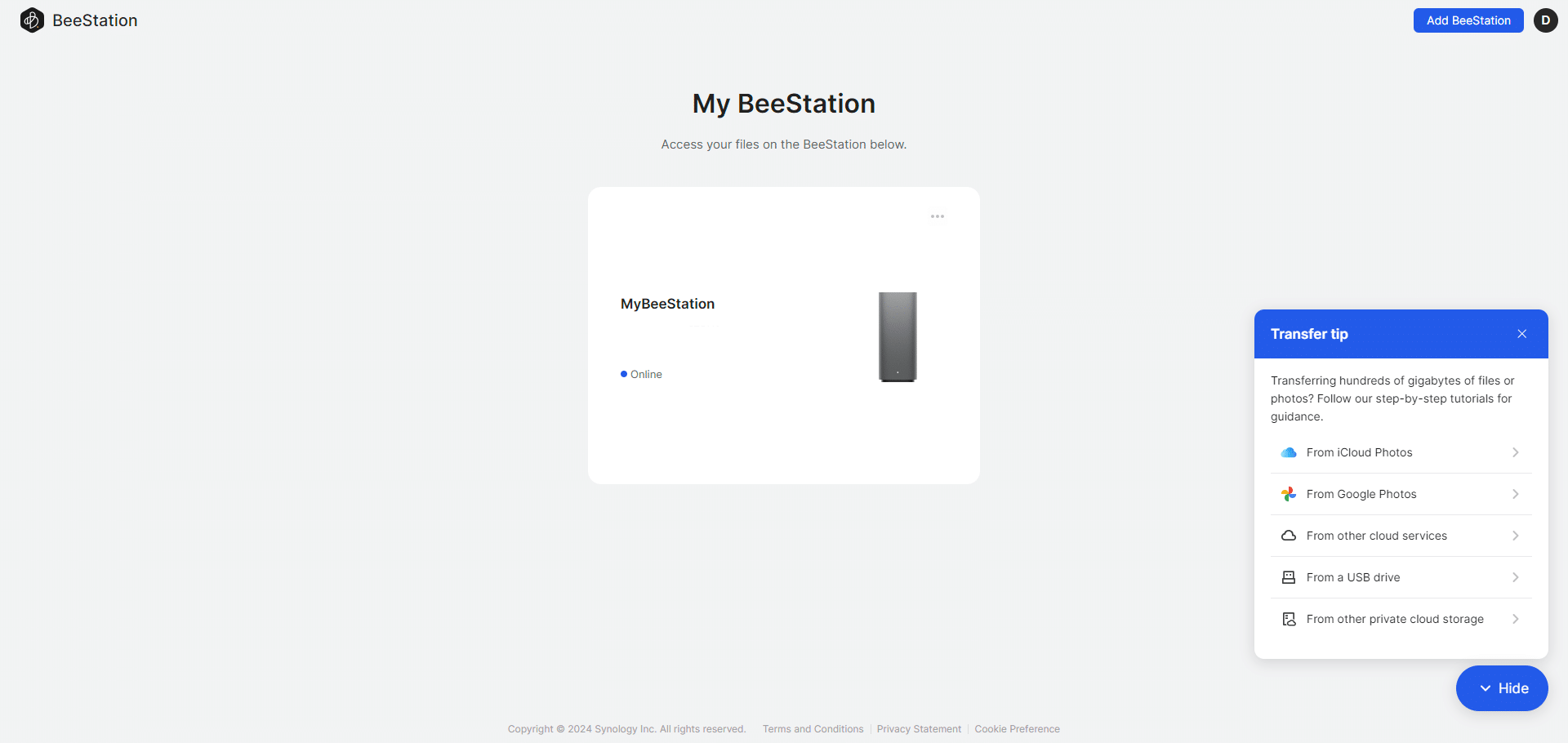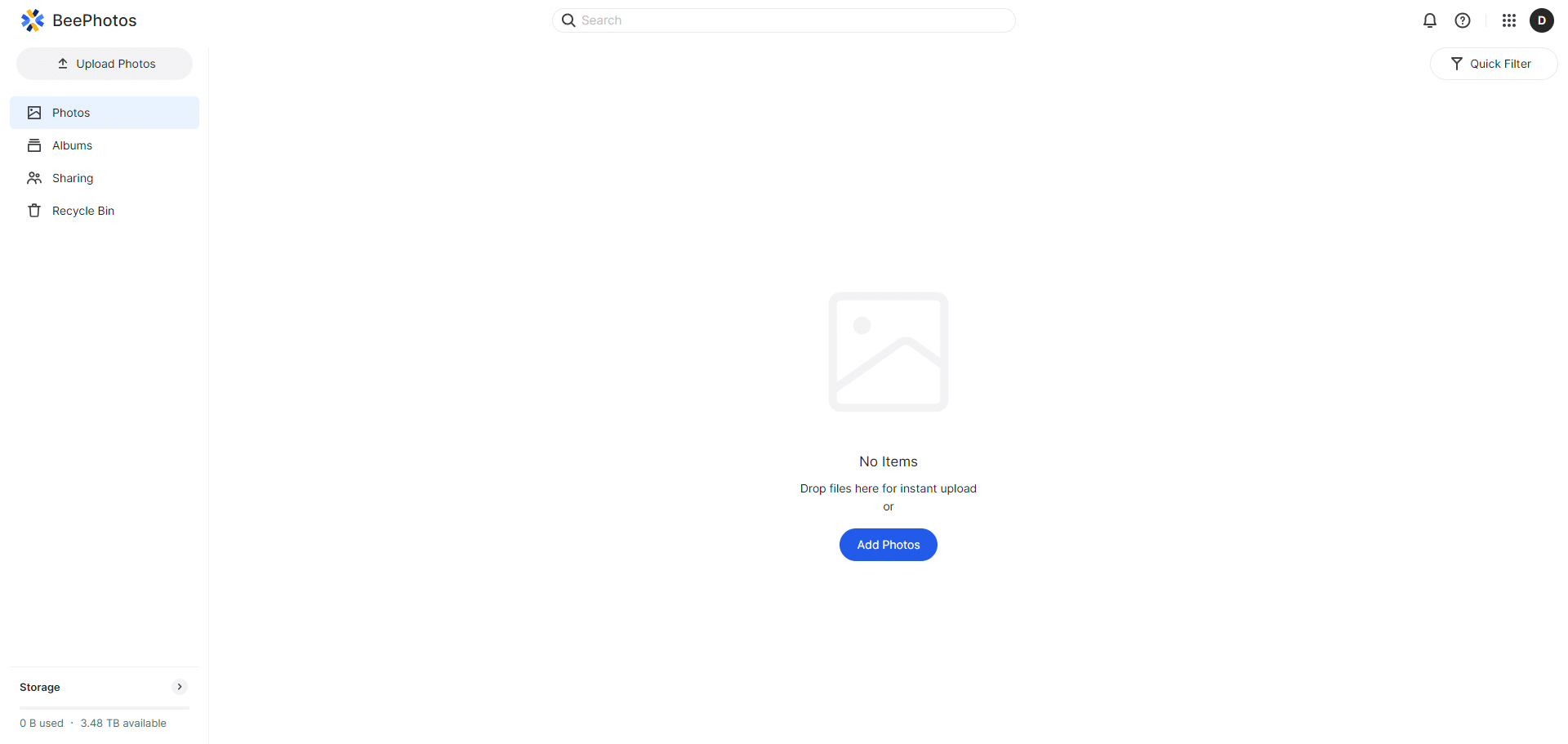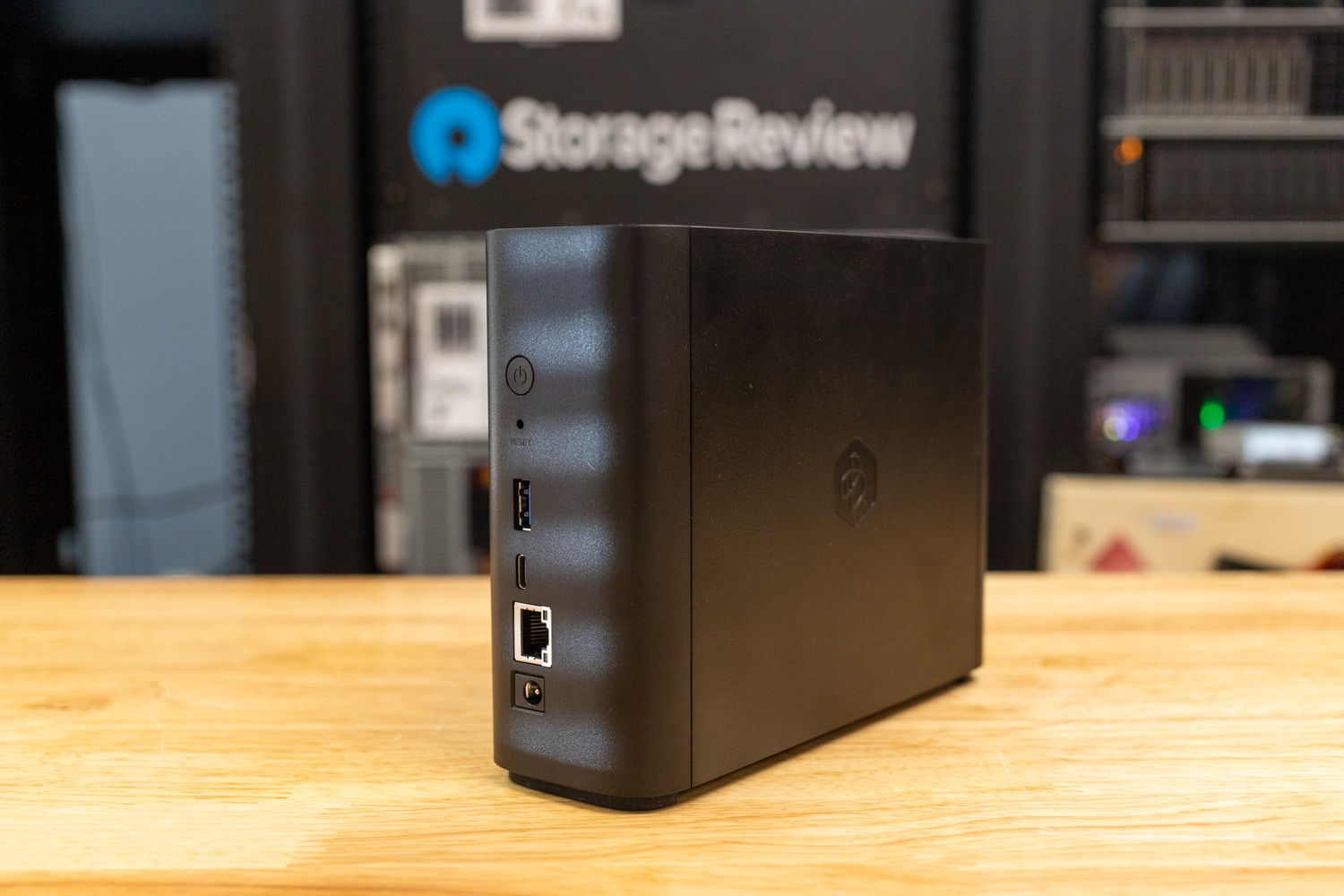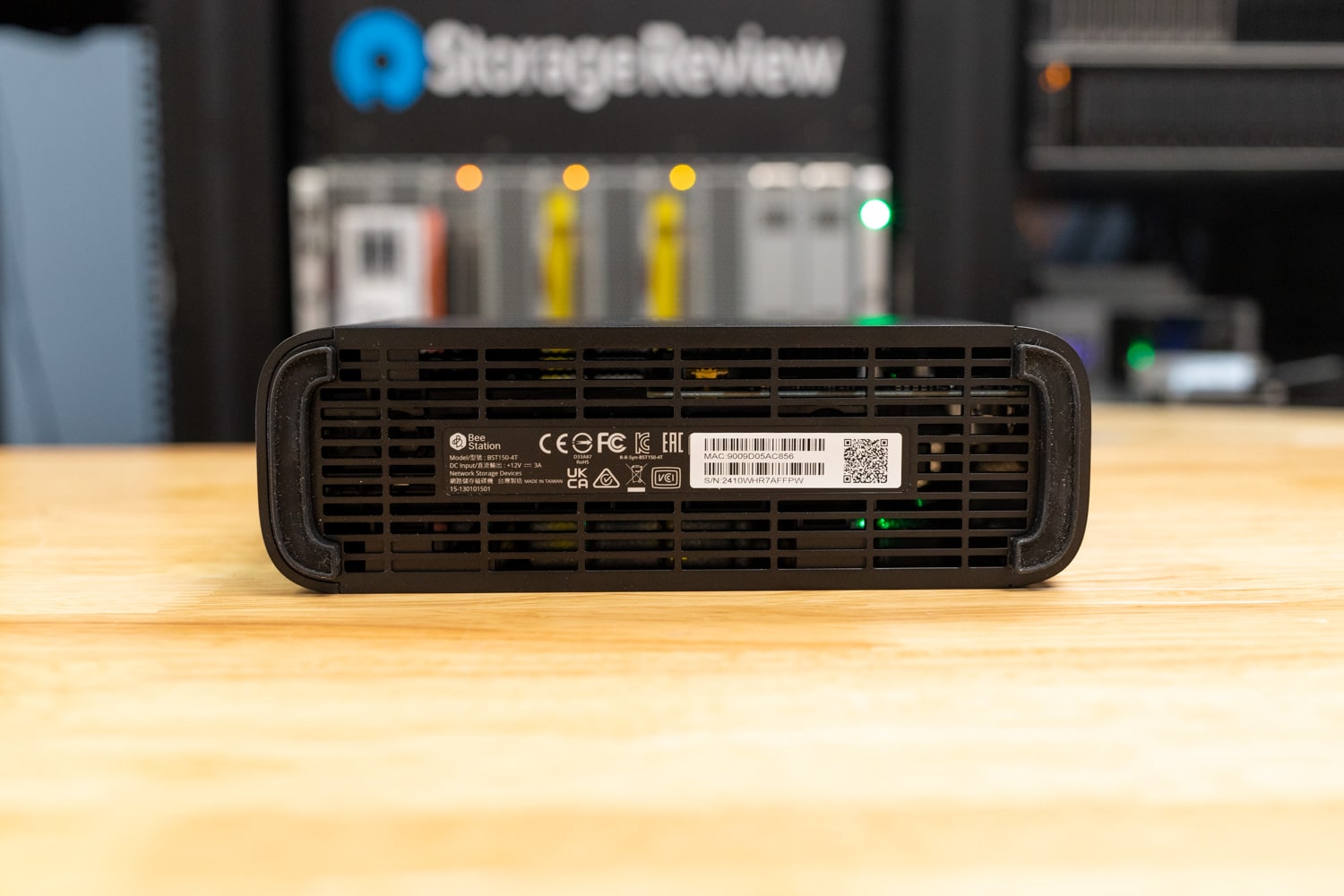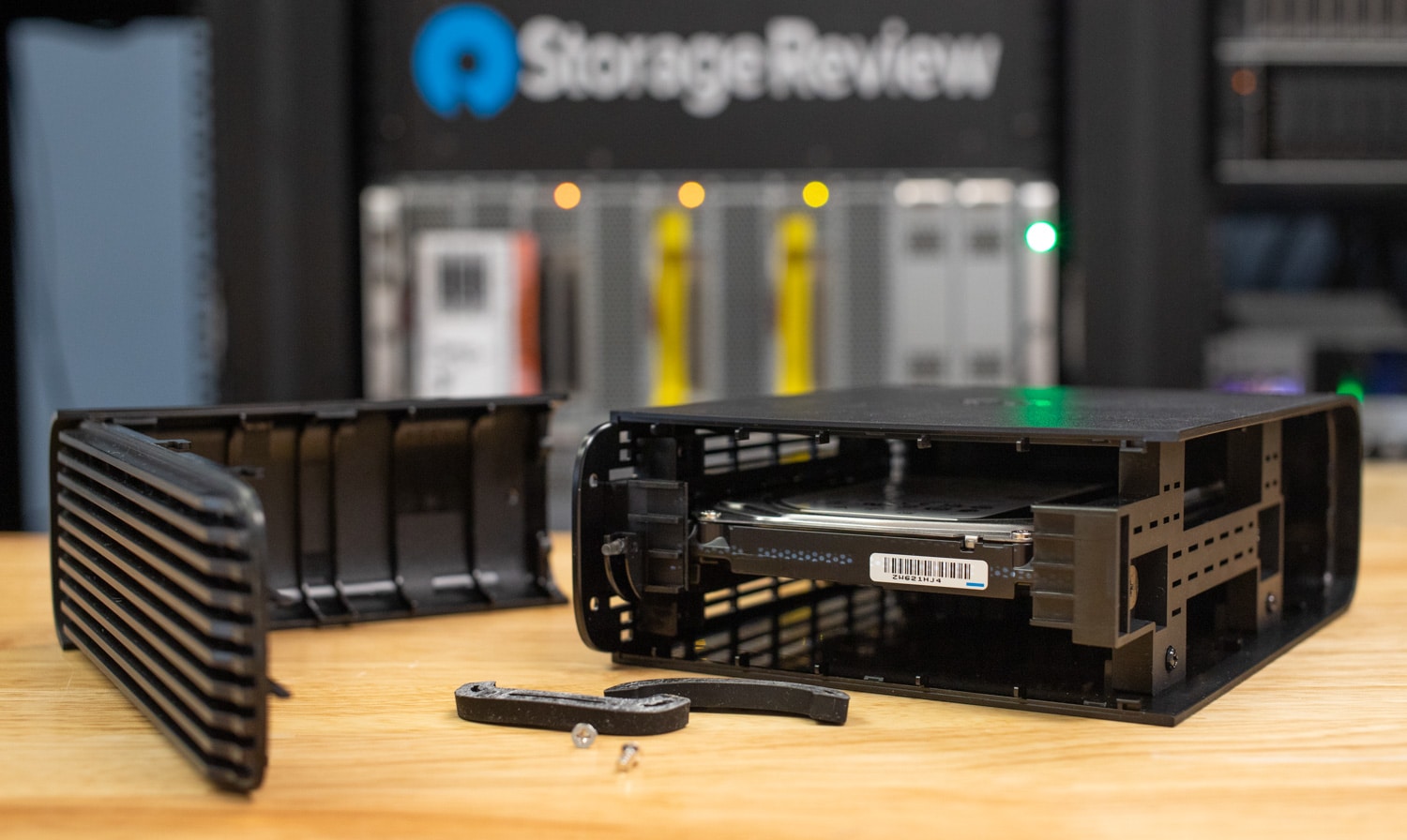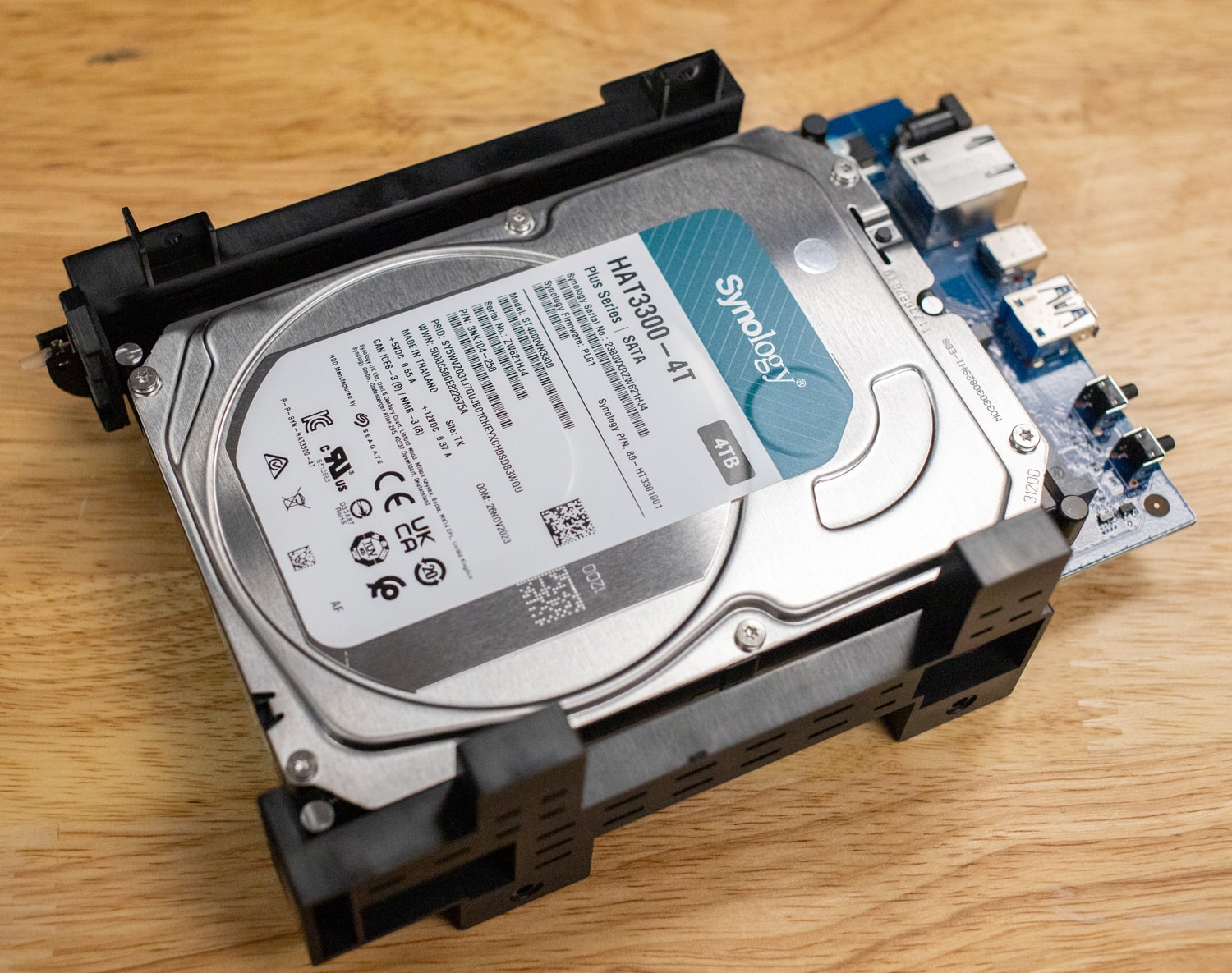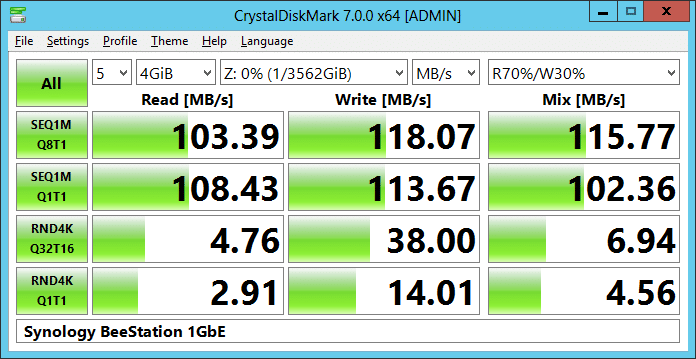The Synology Beestation takes a very user-friendly approach to backing up and sharing photos and files as a “personal cloud.”
Synology is one of the best-known names in personal and small business NAS systems. Recently, Synology released a new “Bee” product line that includes BeeStation and BeeDrive. The Synology BeeStation is marketed as a “Cloud-like Experience,” making it easy to back up photos and files from your computer or phone. This Bee product line also caters more to the casual user market than the typical Synology device like the DiskStation lineup.
The BeeStation is easy to use and gives customers a NAS-ish solution that backs up mobile devices and computers and stores excess files. The setup is highly streamlined to make the process quick and painless, and it only takes a few minutes to get it set up out of the box. The BeeStation uses a web interface or mobile app for most use cases and, by default, does not have local access without an internet connection. For convenience, though, the web interface allows access to the BeeStation outside the network for constant access to stored data.
Since the Bee products are more simplified, they likely will not attract the same crowd as other Synology products, but that’s the intent. If you are hoping for surveillance, virtualization, docker, or other utilities, the BeeStation isn’t the solution. It lacks most additional applications that standard DiskStations support but is excellent at basic file and media storage.
Synology BeeStation Setup
The entire setup process for BeeStation is very streamlined and user-friendly from start to finish. The process is assisted by straightforward instructions and graphics, making it unlikely for you to run into issues along the way. In our testing, the setup process was only about five steps and took less than ten minutes to complete. The BeeStation requires a Synology account for setup so it can be accessed remotely.
After the setup process, you are greeted with a landing screen that offers you the choice between BeeFiles or BeePhotos. The BeePhotos portion is optimized for photo and video storage, with larger thumbnails and a built-in video player. BeePhotos also organizes your images using the metadata for location, date, and photo subject sorting.
From here, the user experience is very similar to that of cloud storage platforms like Google Drive, Dropbox, and OneDrive. This is in line with the Personal Cloud objective.
Synology BeeStation Features
Overall, the BeeStation operates like a stripped-down version of the typical Synology UI, with only the Files and Photos apps. This helps create a simplified user experience tailored to the BeeStation’s capabilities but may throw off people who are used to the normal DSM experience.
To keep backups, the BeeStation allows you to sync your data either one-way or bidirectionally with existing cloud providers, like Google Drive, Dropbox, and OneDrive. The idea is to unify your data between different cloud solutions or have a second copy in case your cloud account is lost. After setup, you also get the option to bulk ingest media from other sources to help settle your data.
Since the BeeStation is a single-drive device, a drive failure would be devastating without some alternate backup device. To mitigate data loss, the BeeStation can be backed up to Synology C2 or an external drive in case of failure, environmental damage, or theft.
One usability note is that the UI layouts for BeePhotos and BeeFiles are remarkably similar to those from everyone’s favorite Alphabet company. These familiar menu layouts should make it much easier for new users to utilize BeeStation’s applications. BeeStation also allows up to eight users to share the drive with their private space and share some files between users. This is big for collaboration, alongside media storage like photos and videos.
Synology BeeStation Specifications
| Capacity | 4TB |
| Processor | Realtek RTD1619B |
| Memory | 1GB DDR4 |
| LAN Port | 1x GbE RJ-45 |
| External Ports | 1x USB-A 3.2 Gen 1 1x USB-C 3.2 Gen 1 |
| Dimensions (HxWxD) | 148.0 x 62.6 x 196.3mm |
| Weight | 820g |
| Power Supply | 36W |
| AC Input Voltage | 100V to 240V AC |
| Power Consumption | 7.85W (Access) 1.65W (HDD Hibernation) |
| Thermal Output | 26.79 BTU/hr (Access) 5.63 BTU/hr (HDD Hibernation) |
| Operating Conditions | Temperature: 0C to 35C (32F to 140F) Relative Humidity: 8% to 80% |
| Non-Operating Conditions | Temperature: -20C to 60C (-5F to 140F) Relative Humidity: 5% to 95% |
| Warranty | 3 Years |
Synology BeeStation Build and Design
The BeeStation’s appearance resembles devices like the single-drive WD My Cloud units. It has only a status light on the front and the IO on the rear. The power and network are self-explanatory, but the USB ports are only used for the USB backup and external drive features.
The BeeStation is passively cooled, with vents through the top and bottom of it. When looking through the vents, you can see the outline of the 3.5″ HDD, so we decided to crack it open and take a better look.
The initial teardown begins with two Phillips screws concealed under the rubber foot at the front. After some careful work with a spudger, a portion of the shell slides off, revealing the back of the hard drive and five more screws. The entire midframe, which holds the drive and motherboard, can be removed. Another four screws are then used to release the drive from the midframe.
The internals comprise a single Synology HAT3300-4T 3.5″ hard drive and a small motherboard that handles networking, I/O, power, and SATA connections. Removing the BeeStation’s drive is not easy, as it is not intended for drive swaps like the DiskStation products. While there isn’t a straightforward upgrade path for the BeeStation, it still allows for drive repair in case of failure. We also enjoy exploring the inner workings of unique devices like this.
BeeStation Performance
Since the BeeStation is a single-drive system, we ran CrystalDiskMark for a performance test. The performance we saw across this test shows that the BeeStation is bottlenecked by its 1GBe NIC and would be able to perform better with more throughput. Since this device is tailored for a more casual user base, it is understandable to go with a 1GBe NIC, as most of its target user base likely won’t have a switch that can handle more over LAN. We couldn’t help ourselves though and wanted to include at least a glimpse of performance data in this review.
Conclusion
The BeeStation is a simple plug-and-play solution for users who want network storage for device backup. The interface is clean and easy to navigate. The BeePhotos application also organizes photos in a way similar to cloud photo services and photo apps on iOS and Android. Currently, the 4TB BeeStation sells for $219.99 at bee.synology.com, which isn’t a massive markup over the drive itself once you add the other components and the convenience. The Synology HAT3300-4T drive inside retails at $99.99 on its own.
Two drawbacks we noted regarding the BeeStation were connectivity and redundancy. The 1GbE NIC stifles the BeeStation since the drive can outperform it for transfers, but to be fair, this product is about simplicity, not performance. The single drive also introduces the potential for data loss in the event of a failure, but this can be mitigated by backups to Synology S2 or external drives. This is something that is critical for customers to understand.
Overall, the BeeStation acts as a lightweight version of Synology’s other NAS devices, with its purpose being quick and easy storage and backup. Though you may notice slower read and write speeds than competing products, the BeeStation excels at its intended purpose of periodic backup of a few files at a time. So, for a user who wants a simple plug-and-play solution for backup and sharing, the BeeStation is a solid choice.
Synology BeeStation Product Page
Engage with StorageReview
Newsletter | YouTube | Podcast iTunes/Spotify | Instagram | Twitter | TikTok | RSS Feed

